Extraterrestrial civilizations may colonize the Galaxy even if they don't have starships
Friday, 27 May 2022 04:23 Astronomers have searched for extraterrestrial civilizations in planetary systems for sixty years, to no avail. In the paper published by International Journal of Astrobiology, Cambridge University Press, and titled "Migrating extraterrestrial civilizations and interstellar colonization: Implications for SETI and SETA," Irina K. Romanovskaya proposes that the search for extraterrestrial intellig
Astronomers have searched for extraterrestrial civilizations in planetary systems for sixty years, to no avail. In the paper published by International Journal of Astrobiology, Cambridge University Press, and titled "Migrating extraterrestrial civilizations and interstellar colonization: Implications for SETI and SETA," Irina K. Romanovskaya proposes that the search for extraterrestrial intellig Geology from 50 light-years away
Friday, 27 May 2022 04:23 Baltimore MD (SPX) May 27, 2022
With its mirror segments beautifully aligned and its scientific instruments undergoing calibration, NASA's James Webb Space Telescope is just weeks away from full operation. Soon after the first observations are revealed this summer, Webb's in-depth science will begin.
Among the investigations planned for the first year are studies of two hot exoplanets cla
Baltimore MD (SPX) May 27, 2022
With its mirror segments beautifully aligned and its scientific instruments undergoing calibration, NASA's James Webb Space Telescope is just weeks away from full operation. Soon after the first observations are revealed this summer, Webb's in-depth science will begin.
Among the investigations planned for the first year are studies of two hot exoplanets cla NASA Supports Small Business Research to power future exploration
Friday, 27 May 2022 04:23 NASA has selected hundreds of small businesses and dozens of research institutions to develop technology to help drive the future of space exploration, ranging from novel sensors and electronics to new types of software and cutting-edge materials. The newly awarded projects under the agency's Small Business Innovation Research (SBIR) and Small Business Technology Transfer (STTR) program also
NASA has selected hundreds of small businesses and dozens of research institutions to develop technology to help drive the future of space exploration, ranging from novel sensors and electronics to new types of software and cutting-edge materials. The newly awarded projects under the agency's Small Business Innovation Research (SBIR) and Small Business Technology Transfer (STTR) program also Satellogic launches 4 Satellites on SpaceX Transporter-5 Mission
Friday, 27 May 2022 04:23 Satellogic Inc. (NASDAQ: SATL), a leader in sub-meter resolution Earth Observation data collection, reports the launch of four additional satellites from Cape Canaveral Space Force Station.
They were delivered to a sun-synchronous low-Earth orbit on SpaceX's Transporter-5 mission on May 25, 2022 onboard the Falcon 9 reusable, two-stage rocket, under SpaceX's Rideshare program. All four sat
Satellogic Inc. (NASDAQ: SATL), a leader in sub-meter resolution Earth Observation data collection, reports the launch of four additional satellites from Cape Canaveral Space Force Station.
They were delivered to a sun-synchronous low-Earth orbit on SpaceX's Transporter-5 mission on May 25, 2022 onboard the Falcon 9 reusable, two-stage rocket, under SpaceX's Rideshare program. All four sat Sidus Space selects L3Harris Mission Critical Operations Center Software for LizzieSat constellation
Friday, 27 May 2022 04:23 Sidus Space, Inc. (NASDAQ:SIDU), a Space-as-a-Service satellite company focused on commercial satellite design, manufacture, launch, and data collection, is pleased to announce its selection of L3Harris Technologies (NYSE:LHX) InControl and OnTime software for command and control and mission planning for LizzieSat Constellation
InControl will provide satellite command and control software
Sidus Space, Inc. (NASDAQ:SIDU), a Space-as-a-Service satellite company focused on commercial satellite design, manufacture, launch, and data collection, is pleased to announce its selection of L3Harris Technologies (NYSE:LHX) InControl and OnTime software for command and control and mission planning for LizzieSat Constellation
InControl will provide satellite command and control software Terran Orbital deploys 6 satellites from SpaceX Transporter-5 mission for multiple customers
Friday, 27 May 2022 04:23 Terran Orbital Corporation (NYSE: LLAP) reports all six Terran Orbital designed and built satellites that launched on the SpaceX Falcon 9 rocket as part of the Transporter-5 mission have successfully deployed on their journey to Low Earth Orbit (LEO).
The Terran Orbital satellites include two NASA CubeSat Proximity Operations Demonstration (CPOD) vehicles,
Terran Orbital Corporation (NYSE: LLAP) reports all six Terran Orbital designed and built satellites that launched on the SpaceX Falcon 9 rocket as part of the Transporter-5 mission have successfully deployed on their journey to Low Earth Orbit (LEO).
The Terran Orbital satellites include two NASA CubeSat Proximity Operations Demonstration (CPOD) vehicles, Debris from Chinese rocket reenters atmosphere, mostly burning up
Friday, 27 May 2022 04:23 Debris from the last stage of the Long March-7 Y5 carrier rocket reentered the atmosphere at 5:34 p.m. on Wednesday (Beijing Time), the China Manned Space Agency said.
The vast majority of the device burned up during reentry and the debris fell into the sea, with the center of the landing area at a latitude of 37.5 degrees north and a longitude of 24.2 degrees east, according to an agency
Debris from the last stage of the Long March-7 Y5 carrier rocket reentered the atmosphere at 5:34 p.m. on Wednesday (Beijing Time), the China Manned Space Agency said.
The vast majority of the device burned up during reentry and the debris fell into the sea, with the center of the landing area at a latitude of 37.5 degrees north and a longitude of 24.2 degrees east, according to an agency Blast a Knob: Sols 3485-3486
Friday, 27 May 2022 04:23 The Sol 3483 drive completed as planned, positioning the rover near several outcrops of knobby material and more "normal" looking bedrock. The tactical uplink team discussed various options and decided to focus this plan's observations on the knobby material. Unfortunately, timing constraints precluded an APXS integration today, as the instrument temperature would be too high to provide high-qua
The Sol 3483 drive completed as planned, positioning the rover near several outcrops of knobby material and more "normal" looking bedrock. The tactical uplink team discussed various options and decided to focus this plan's observations on the knobby material. Unfortunately, timing constraints precluded an APXS integration today, as the instrument temperature would be too high to provide high-qua Why haven't we discovered co-orbital exoplanets? Could tides offer a possible answer?
Friday, 27 May 2022 04:23 In our solar system, there are several thousand examples of co-orbital objects: bodies that share the same orbit around the Sun or a planet. The Trojan asteroids are such an example. We have not yet observed any similar co-orbitals in extrasolar systems, despite discovering more than 5,000 exoplanets.
In a new study published in Icarus by Anthony Dobrovolskis, SETI Institute and Jack Lissa
In our solar system, there are several thousand examples of co-orbital objects: bodies that share the same orbit around the Sun or a planet. The Trojan asteroids are such an example. We have not yet observed any similar co-orbitals in extrasolar systems, despite discovering more than 5,000 exoplanets.
In a new study published in Icarus by Anthony Dobrovolskis, SETI Institute and Jack Lissa SpaceX replacing heat shield on upcoming Crew Dragon mission after failed test
Friday, 27 May 2022 02:03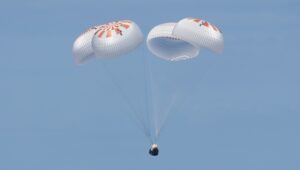
SpaceX will replace the heat shield on the next Crew Dragon spacecraft flying to the International Space Station after it failed inspections, but NASA says there is no risk of a similar problem for the spacecraft currently at the station.
General Dynamics wins ground systems contract for Space Development Agency’s megaconstellation
Thursday, 26 May 2022 21:08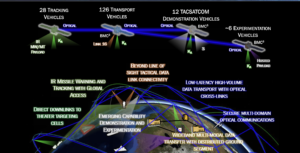
General Dynamics Mission Systems won a $324.5 million contract to operate the ground systems and manage network operations of the Space Development Agency’s low Earth orbit constellation.
The post General Dynamics wins ground systems contract for Space Development Agency’s megaconstellation appeared first on SpaceNews.
Space Force rolls out cybersecurity standards for commercial providers of satellite services
Thursday, 26 May 2022 19:47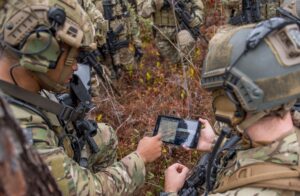
The Space Systems Command announced May 26 the official rollout of a new process to assess the cybersecurity of commercial satellite operators that do business with the Defense Department.
The post Space Force rolls out cybersecurity standards for commercial providers of satellite services appeared first on SpaceNews.
Economy could dampen growth of space industry
Thursday, 26 May 2022 17:52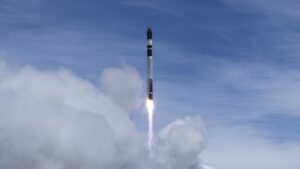
Broader economic issues as well as the performance of some space companies could slow the growth of the industry in the next few years, executives warn.
The post Economy could dampen growth of space industry appeared first on SpaceNews.
Why haven't we discovered co-orbital exoplanets? Tides may offer a possible answer
Thursday, 26 May 2022 17:35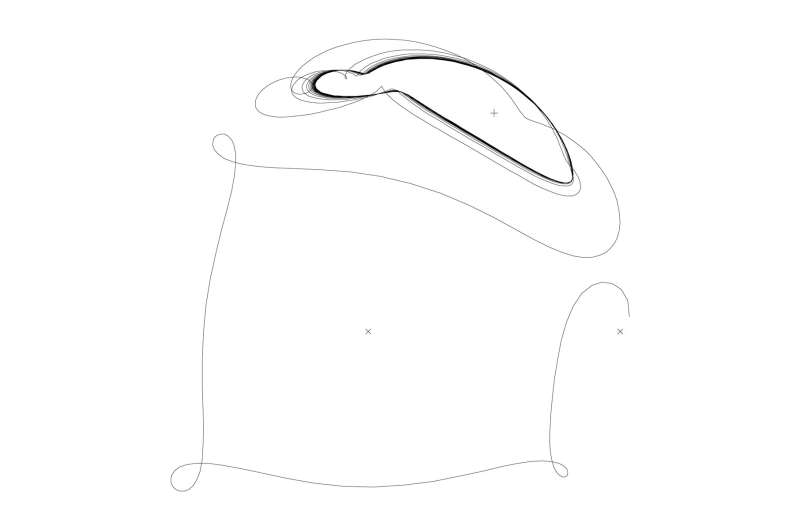
Additive manufacturing has progressed far beyond brackets
Thursday, 26 May 2022 15:43
Spacecraft developers are additively manufacturing engine nozzles and other complex spacecraft components.
The post Additive manufacturing has progressed far beyond brackets appeared first on SpaceNews.

